You should always aim to capture what exists in reality. A Customer instance does not have a 1 to 1 relationship with a ProductList because a ProductList can be viewed by more than one Customer at a time, and the Customer in no way owns that list.
What is probably closer to reality is:
- Every
Supermarket individual manages one Inventory individual
- Every
Inventory individual:
- is managed by one
Supermarket individual
- comprises
Inventory Item individuals
- Every
Inventory Item individual
- is comprised by one
Inventory individual
- describes
Product individuals
- Every
Product individual
- is described by one
Inventory Item individual
- is located at one
Physical Location individual
- Every
User Account individual
- identifies one Person individual
- plays Role individuals
- Every Role individual provides Capability individuals
In real life, people play roles. These roles might be “customer”, “doctor”, or “police officer”. Every individual Role has a set of capabilities it can perform. In an OO system, every individual Role can use operations to implement its capabilities, such as purchaseProduct(), prescribeMedication(), or writeMovingViolation().
There are multiple ways to represent these roles and capabilities in an OO system. In one approach, a customer instance of a Role might be configured to allow access to queryInventory() and purchaseProduct() operations on the Supermarket and InventoryItem classes respectively. An owner instance of a Role 1 might be configured to allow access to addInventoryItem() and removeInventoryItem() operations on the Inventory class.
Here is an example of a UML model:

In another approach, you might create singleton subclasses of the Role class, called CustomerRole and OwnerRole, and then have each of those subclasses invoke operations. You might put your viewProducts() and addProducts() operations into those singletons.
1 Consider calling this role “manager”, so the owner of the supermarket can hire other people to do the work.
